Search
Remove Ads
Advertisement
Search Results
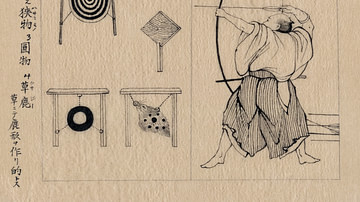
Article
Martial Arts in Medieval Japan
There were 18 martial arts (bugei or bujutsu) in medieval Japan, and these included use of weapons, unarmed self-defence techniques, swimming, and equestrian skills. Initially designed to hone the skills of warriors for greater success on...
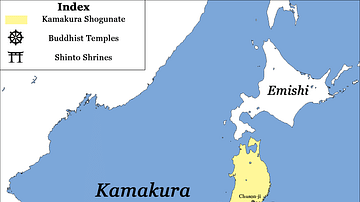
Image
Major Temples and Shrines of Japan circa 1200 CE, Kamakura Shogunate
This map depicts all major Buddhist temples and Shinto shrines of Japan around the year 1200 CE. Notice that many renowned temples (such as the famous Kinkaju-ji) have not yet been built at that time. The map highlights the city of Kamakura...
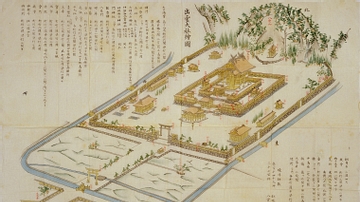
Image
Izumo-taisha Layout
A 19th century CE drawing of the Shinto shrine complex at Izumo-taisha, Japan.
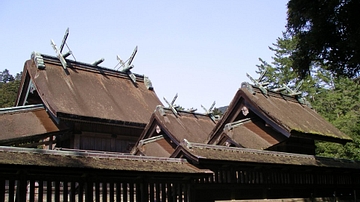
Image
Honden, Izumo-taisha
The honden of the Shinto Izumo-taisha shrine, Shimane, Japan. Founded prior to the 7th century CE, the present building dates to 1744 CE.

Image
Mount Fuji, Aerial View
Mount Fuji, Japan's highest mountain and a place of pilgrimage for followers of Shinto.
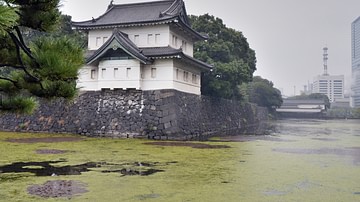
Definition
Edo Period
The Edo period refers to the years from 1603 until 1868 when the Tokugawa family ruled Japan. The era is named after the city of Edo, modern-day Tokyo, where the Tokugawa shogunate had its government. It is also sometimes referred to as the...
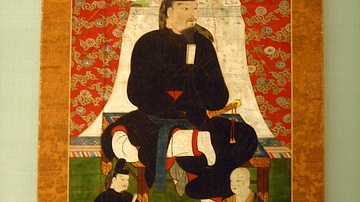
Definition
Fujiwara Clan
The Fujiwara clan (Fujiwara-shi) was a powerful extended family group which dominated all areas of Japanese government during the Heian Period (794-1185). Founded by Fujiwara no Kamatari in 645 CE, male members held on to key official positions...
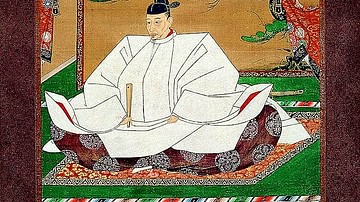
Definition
Toyotomi Hideyoshi
Toyotomi Hideyoshi (1537-1598 CE) was a Japanese military leader who, along with his predecessor Oda Nobunaga (1534-1582 CE) and his successor Tokugawa Ieyasu (1543-1616 CE), is credited with unifying Japan in the 16th century CE. Hideyoshi...
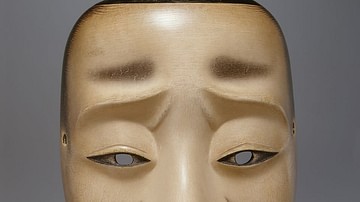
Definition
Noh Theatre
Noh (Nō) theatre is a Japanese performance art which became especially popular from the 14th century CE and which is still performed today. Noh actors, who were always male in the medieval period, famously move and make gestures in a very...
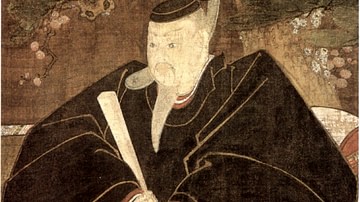
Image
Tenjin (Sugawara no Michizane)
A representation of Sugawara no Michizane, aka Tenjin, (845-903 CE) on painted silk. Michizane was a scholar, poet and high-level administrator in the Japanese court during the Heian Period. He was later deified as the god of scholarship...